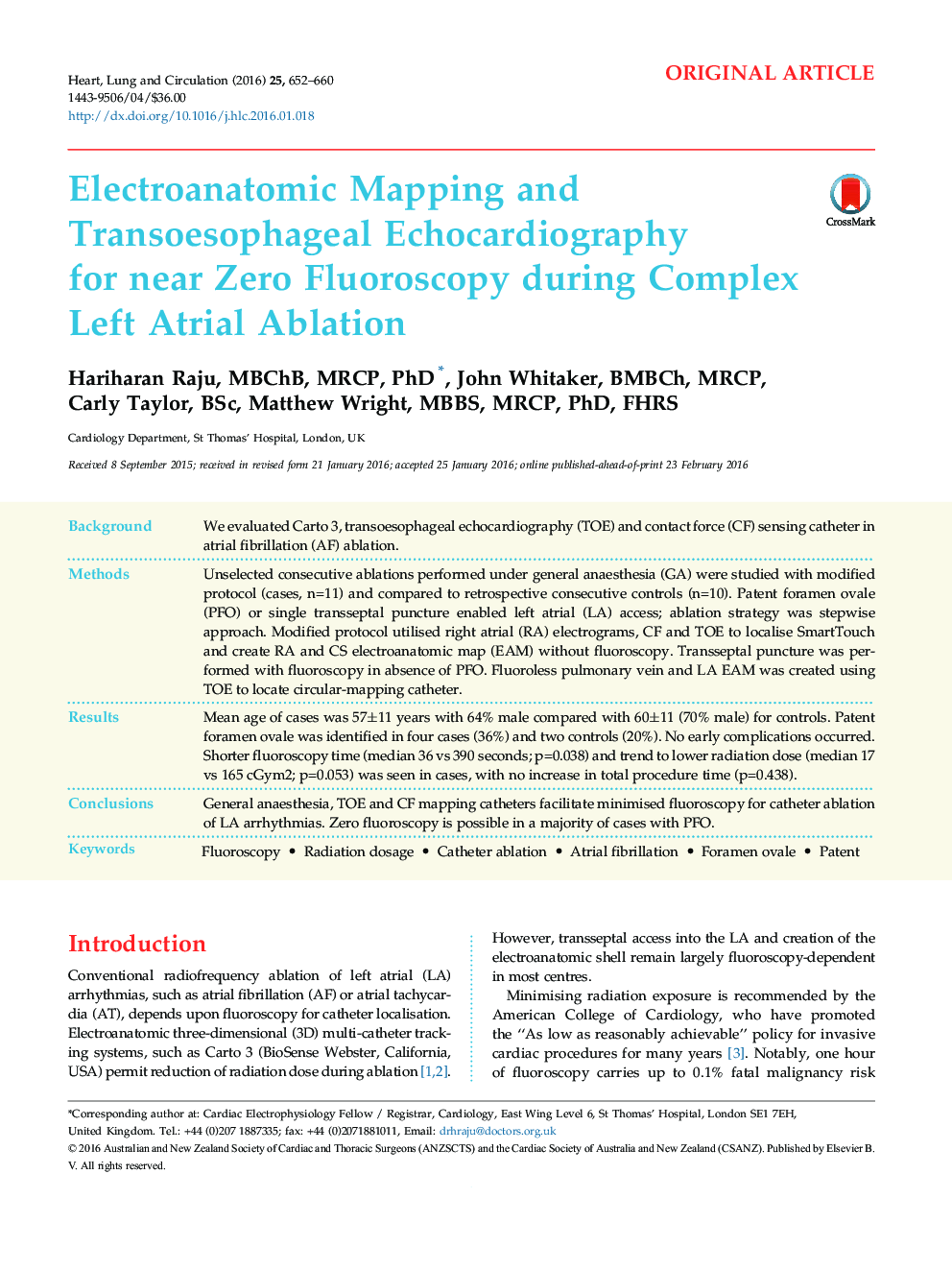| Article ID | Journal | Published Year | Pages | File Type |
|---|---|---|---|---|
| 2916595 | Heart, Lung and Circulation | 2016 | 9 Pages |
BackgroundWe evaluated Carto 3, transoesophageal echocardiography (TOE) and contact force (CF) sensing catheter in atrial fibrillation (AF) ablation.MethodsUnselected consecutive ablations performed under general anaesthesia (GA) were studied with modified protocol (cases, n=11) and compared to retrospective consecutive controls (n=10). Patent foramen ovale (PFO) or single transseptal puncture enabled left atrial (LA) access; ablation strategy was stepwise approach. Modified protocol utilised right atrial (RA) electrograms, CF and TOE to localise SmartTouch and create RA and CS electroanatomic map (EAM) without fluoroscopy. Transseptal puncture was performed with fluoroscopy in absence of PFO. Fluoroless pulmonary vein and LA EAM was created using TOE to locate circular-mapping catheter.ResultsMean age of cases was 57±11 years with 64% male compared with 60±11 (70% male) for controls. Patent foramen ovale was identified in four cases (36%) and two controls (20%). No early complications occurred. Shorter fluoroscopy time (median 36 vs 390 seconds; p=0.038) and trend to lower radiation dose (median 17 vs 165 cGym2; p=0.053) was seen in cases, with no increase in total procedure time (p=0.438).ConclusionsGeneral anaesthesia, TOE and CF mapping catheters facilitate minimised fluoroscopy for catheter ablation of LA arrhythmias. Zero fluoroscopy is possible in a majority of cases with PFO.
